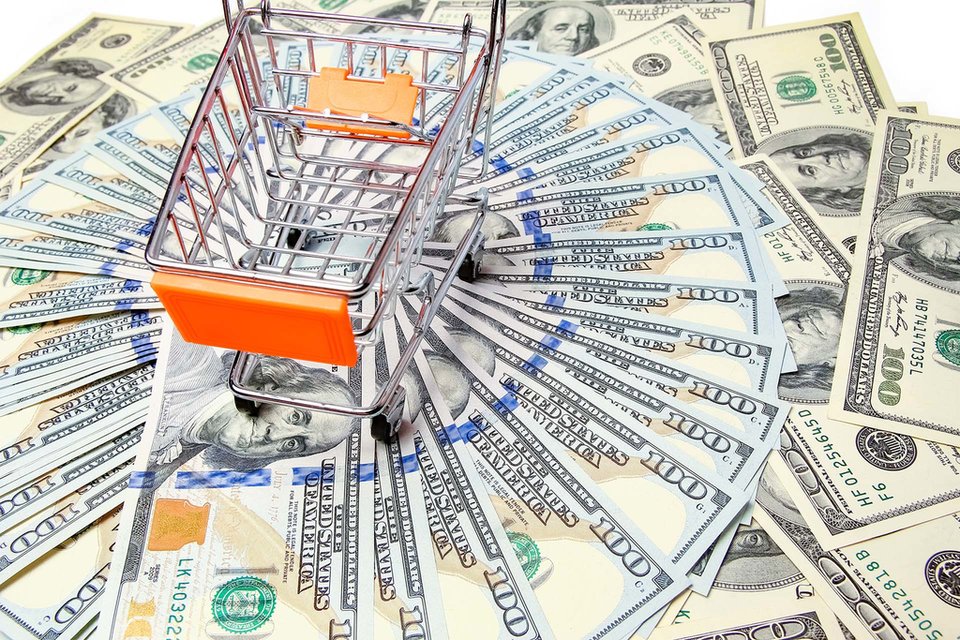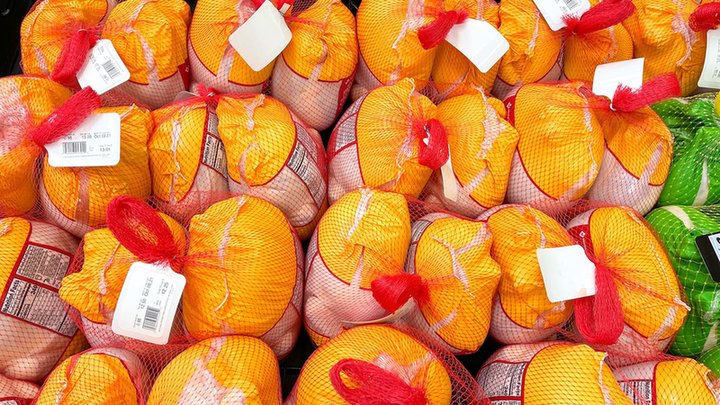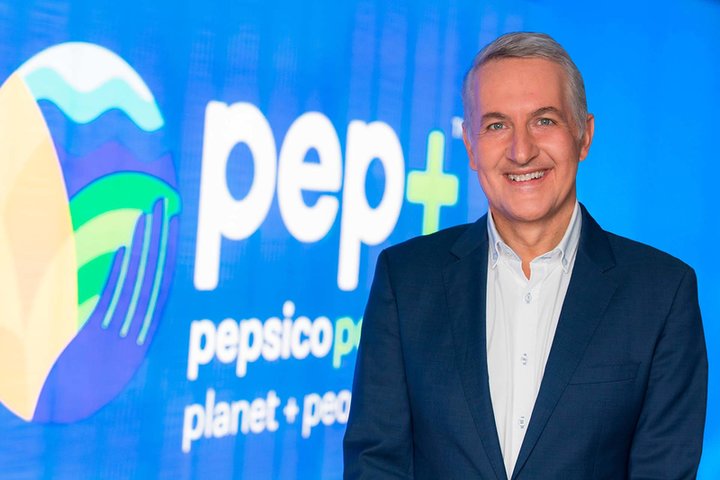
Inflation
Counting the cost – the outlook for inflation
The pressure faced by manufacturers this year has been widely described as “unprecedented”, with the cost of a range of inputs rising. Dean Best weighs up what might be on the horizon next year.
“A
very challenging and volatile cost and supply environment”.
“The highest cost inflation we’ve seen in a decade or more”.
“Input costs are rising faster than we can roll forward through pricing”.
“The unparalleled costs have been persistent and show no signs of regulating”.
Food manufacturers the world over have been vocal about the pressure they’ve seen on their costs in 2021. “Unprecedented” has been a word often used to describe the spikes seen in the prices of a range of inputs, from wheat and palm oil to energy, freight, warehousing and labour.
Food commodity prices, as measured by the UN’s Food and Agriculture Organization, have hit decade highs more than once this year. The latest figures released by the FAO, issued in early November, showed wheat prices at their highest level since 2012, sugar quotations up more than 40% year-on-year and the organisation’s vegetable oils index hitting an “all-time high”.
Passing on price increases
Manufacturers around the world have moved to up prices, from the major, global names based in North America and Europe to companies across emerging markets including India’s Britannia Industries and Egypt’s Edita Food Industries.
And the pressure, manufacturers say, has grown as we’ve moved through 2021. Energy and transport bills have accelerated in recent months, some manufacturers have pointed to the cost of plastics, while labour shortages in markets around the world have pushed up salary expenses.
On a call with analysts and investors in October, Nestlé CEO Mark Schneider warned the company’s “input costs are rising faster than we can roll forward through pricing”. He added: “We have consistently cautioned on this aspect as from our Q1 conference call in April. The situation has not improved. If anything, we’re seeing further downsides compared to what we told you in the summer.”
Schneider’s comments echoed those made just 24 hours earlier by his counterparts at Danone.
“I've been pretty vocal on the fact that we are going for selective pricing and this is what we did in H1,” Danone CFO Juergen Esser told investors last month. “Now, with the increased inflationary pressure, we are now, I would say, gradually going to broad-based pricing.”
It’s tougher for smaller manufacturers but the squeeze on costs doesn’t discriminate and, of course, the impact is often worse on those unable to enjoy the benefits of scale or of brand equity. That hasn’t stopped them from moving to increase prices and, in many cases, succeed in landing some of their requests with customers.
Just about everybody is doing it because they have no choice not to do it
“Some [customers] – and I can understand that –push back a little bit but we’ve had nobody reject a price increase and we deal with the biggest retailers in the country,” Adnan Durrani, the founder and CEO of US frozen and shelf-stable food manufacturer American Halal Company, says. “We’ve been told by other retailers and by other vendors that just about everybody is doing it because they have no choice not to do it. The ecosystem is very ripe for this right now.”
Long-standing industry watchers agree the situation facing food manufacturers is unprecedented. “In the past, you would have agri-commodity prices going up, or a temporary shortage of things like plastic or cardboard, or perhaps it could be labour issues – but having them all at the same time moving up? That is unprecedented,” Cyrille Filott, global strategist for consumer foods at Netherlands-based financial services group Rabobank, reflects.

Orlando, FL USAA display of frozen turkeys in a Sams Club grocery store
Credit: Joni Hanebutt / Shutterstock.com
In November, the US government announced inflation figures that showed the country’s consumer price index, which includes items from fuel and rents to groceries, jumped 6.2% year-on-year in October, the biggest 12-month increase since 1990. A week later, the UK announced its consumer prices index rose 4.2% in October, the fastest rise in a decade. As retailers head into the festive season, they will be trying to hold prices as steady as they can.
That said, there are ways retailers can react. “We think [UK] inflation is likely higher than 4.2% and that’s certainly likely the case,” Steve Dresser, managing director of UK retail consultancy Grocery Insight, says. “Expect to see changes in and around the shelf edge prices – whilst prices will rise, no one wants to put a price up, especially with the press attention on [the] cost of living meaning customers are watching prices like hawks.
“What else may retailers do? One, multibuys change – i.e. ready meals on a historic three for GBP6 (US$8) [offer] go to three for GBP7. Two, multibuys become poorer value – i.e. three for GBP3.50 becomes two for GBP3, worsening savings. Three, promotions become weaker – usually down to GBP1, drops to GBP1.20.”
Little sign of respite
As we head into the final month of 2021, the consensus among executives and industry experts is inflation is set to continue to be a problem for manufacturers next year.
“You can expect that pricing will ramp up further in Q4 and next year as well because we do expect to have higher input cost inflation next year in 2022,” Nestlé CFO François-Xavier Roger told analysts in October.
His comments were echoed by other executives reporting their companies’ third-quarter financial results in recent weeks.
“When it comes to inflation, 7% H1, 9% H2, so an average 8% for us this year,” Danone’s Esser said. “We do not expect inflation to be any less than what we are seeing in 2021.”
“On a planning basis, we’re assuming that the high levels of inflation will persist for the foreseeable future,” Kellogg CFO Amit Banati said in early November.
Esser pointed to the ongoing pressure on costs in the supply chain. “It will depend, to a very large extent, on what happens in global supply chains because what we are seeing today is that transportation rates, particularly – and also I talk about truck capacities and also shipping from Asia to Europe or the US and back – is under high tension. If this is going to continue over the next quarters, and I think we need to assume it’s going to continue over the next quarters, we could see even higher inflation rates next year.”
The good news is elasticities have performed very well
Can manufacturers look to continue to increase prices? During 2021, some executives have spoken about what they’ve seen as a muted reaction from consumers to the higher prices that have hit shelves.
“We’ve been successful at driving pricing,” Kellogg chairman and CEO Steve Cahillane said on the cereal giant’s third-quarter results call in early November. “The good news is elasticities have performed very well, so they've been lower than historically. That was kind of our expectation and I think a lot of [that] expectation is based on just the totality of the inflationary environment.”

April 29, 2021, Brazil.Unilever logo on a smartphone screen
Credit: rafapress / Shutterstock.com
Over at PepsiCo, the US food-and-beverage group’s chief executive made similar comments. “What we’re seeing across the world is much lower elasticity on the pricing that we’ve seen historically, and that applies to developing markets, western Europe, and the US,” Ramon Laguarta said.
“Across the world, the consumer seems to be looking at pricing a bit differently than before. It could be several hypotheses. I think, in our case, our brands are stronger and I think our innovation is stronger. There could be also some behaviours as consumers are shopping faster in-store and they might be paying less attention to pricing as a decision factor and they might be giving more relevance to brands that they feel a bit closer to. We’re seeing less elasticity and we’re adjusting our models as we go. That’s obviously informing our decisions as we price the balance of the year and into 2022.”
And, at American Halal Company, the owner of the Saffron Road brand, Durrani points to the company’s own sales rates. “The interesting thing is consumers are paying it and they’re not baulking at it. Now, obviously, that’s because they've got US$2trn in savings. Interest rates are low and, for those that have stock market holdings, they’re up significantly so they generally are not afraid of spending more. I think it’s going to be a pretty big Christmas season this year for the retailers as well because of that,” he explains.
“It’s interesting. We’re seeing, counter-intuitively, increased velocities. We put through price increases and we’re seeing increased velocity even at higher price points.”
At Rabobank, Filott expresses surprise at the number of food companies he hears that feel confident about pushing through price increases. “Food manufacturers are pretty confident that they are able to pass on at least a large chunk of the inflation, if not everything,” he says. “It is difficult for retailers not to accept this. Of course, the negotiations are tough as ever – and perhaps even tougher – but [retailers] will have to absorb this.
“In the short-term, there is still a lot of stress on the system but – and this is where I’m surprised how the industry has responded – there’s a lot of confidence they are able to increase those prices to the retailer in the near future.”
Indeed, in recent days, it’s emerged General Mills has written to customers in the US about its plans to raise prices in mid-January. A company spokesperson told Just Food that “given the level of inflation and other supply chain costs that we forecast for the fiscal year, we will be using all tools in our pricing toolkit, including taking list price increases where needed across our portfolio”.
Beyond price
In what remains a competitive environment and with many consumers likely watching prices closely, what other levers can manufacturers pull beyond asking for a price increase?
Andy Searle, a managing director and partner at management consultants AlixPartners, points to the possible impact on product ranges.
“As manufacturers juggle the impact of inflationary cost pressures on their businesses, portfolio rationalisation will become a big theme,” he says. “Companies will be looking at where they can find synergies across their product portfolio and simplify their ranges in order to drive greater profitability. This might involve using the same packaging across multiple products in order to introduce greater consistency or involve prioritising and scaling back product ranges.”

April 29, 2021, Brazil. Unilever logo on a smartphone screen
Credit: rafapress / Shutterstock.com
There’s no doubt manufacturers are looking at other tactics beyond price hikes. In October, Unilever reported “underlying pricing growth” of 4.1% in the third quarter, up from 1.6% in the previous three months. CEO Alan Jope told analysts the FMCG giant “employs five revenue-management tools to “land price”.
“The first is list price increase. The second is pack-price architecture. The classic example of this is a smaller fill for the same price or a much bigger pack but at a higher price. The third is managing promo levels. The fourth is trade spend and the fifth is mix – and we’re pulling all those levers,” Jope said. “But obviously to go … to 4.1% we’ve had to rely more on list-price increases than we would in a normal period.”
Many of Jope’s counterparts have made similar comments in recent weeks. “We are executing productivity initiatives. We are being disciplined on overhead and selective on brand investment, and we are carefully executing all levers of revenue growth management,” Kellogg’s Cahillane said. “Our first line of defence is always productivity and, as we plan out 2022, we’ll plan for the same levels of productivity or greater and then look to the revenue growth management that we’ve successfully employed in order to protect our margins into next year.”
There is, however, the view that the amount of pressure on manufacturers’ cost bills means price will be the principal tool. “Suppliers will no doubt be exploring the well-versed tactics around product size, promotions, assortment and so forth. They will also be trying to find ways to offset as much of the upward price pressure as possible through efficiency measures. including automation, although the latter does not tend to be quick,” Clive Black, equity analyst at UK financial services group Shore Capital and an experienced observer of the country’s grocery sector, says. “As such, there feels like there is less room for manoeuvre with this inflationary round to avoid price rises.”
Existential questions
The new year looks set to offer much of the same strains and stresses on cost as seen in 2021.
Some offer hope that, on some inputs, the pressure will ease in the back half of 2022. “I do think this is going to temper probably in the fourth quarter of next year,” Durrani says. “I think that certain agricultural commodities will start to get better supply in the fourth quarter of next year, exactly one year from now. We’re hoping for that but we could be wrong. We were about this quarter. For now, it's spiralling and I think everyone in the food industry is adjusting to it.”
Some in the industry have cast their minds further forward. In October, Kraft Heinz CEO Miguel Patricio warned consumers that they will have to get used to higher food prices. The same month, Ranjit Singh Boparan, the owner of UK poultry manufacturers 2 Sisters Food Group and Bernard Matthews, argued food in the country is too cheap.
Boparan said inflationary pressures are “decaying the food sector’s supply chain infrastructure”, arguing it’s unsustainable for manufacturers alone to bear the brunt of price increases.
“How can it be right that a whole chicken costs less than a pint of beer? You’re looking at a different world where the shopper pays more,” he said.
At Shore Capital, Black adds: “Indeed, if society wants food produced from animals treated with respect, that is safe, nutritious and meeting growing sustainability responsibilities, then it is to be expected that food prices will have to rise and form a larger part of ongoing household expenditure.”